Reviews
Kenny Schachter on Branded Chaos at Art Basel in Hong Kong
Soon there will only be Basel fairs.
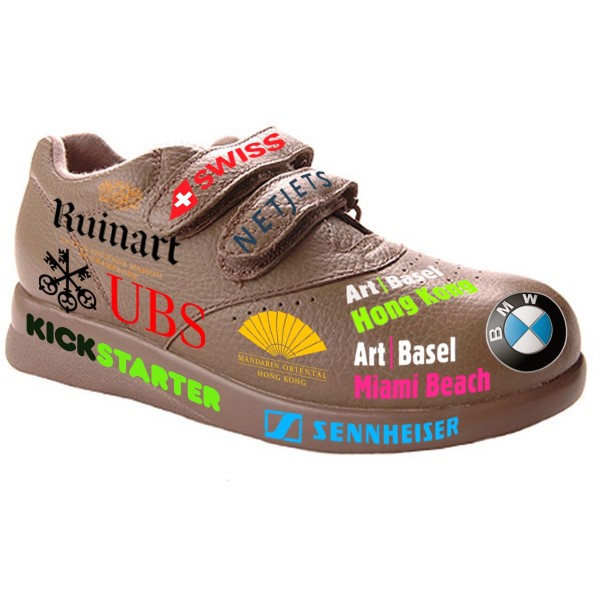
Soon there will only be Basel fairs.

Kenny Schachter

Welcome to Hong Kong, where the bills are stamped with HSBC—one of three commercial banks authorized by the government to issue currency (how annoying is that?)—which is hosting the latest Basel iteration. Soon there will only be Basel fairs, along with Art Central, an Asian-focused event that remains independent, for now. The city feels removed and different, and at eleven to twelve hours from London and sixteen from New York, it’s definitely that. There’s Healthy Street and Happy Valley and signs not to bring animals, birds, and poultry into the subway, which is always good to know. I also participated in a debate hosted by Intelligence Squared around the idea that money has irreparably soiled art. What will surprise some, I chose to argue against the notion.
It’s refreshing to work in a city characterized by near-obsessive manners in an art world with next to none. A young European auction expert I had drinks with ordered with a faux Chinese accent, which he swore made him more readily understood yet I thought more resembled a Simpsons’ character. The fog, which didn’t relent for three days, made London look like the Canary Islands.
Forget being lost in a supermarket, the omnipresent monster malls are redolent of my youth in Long Island, of Roosevelt Field and Valley Stream, but in Hong Kong they are blown to another scale. It’s brand land: who knew there were so many brands? And there wasn’t an empty space in any of the 647 I happened across during my short stay. You can walk across the city from mall to mall shielded from the daily downpour. There should be an art version shielding us from further fairs. Speaking of malls and branding, how about a preferred discount in all Basel booths for sporting the team Basel Ortho-shoe, which I was in need of after the excruciating pain of traipsing for hours on end like a (non-formalist) zombie.
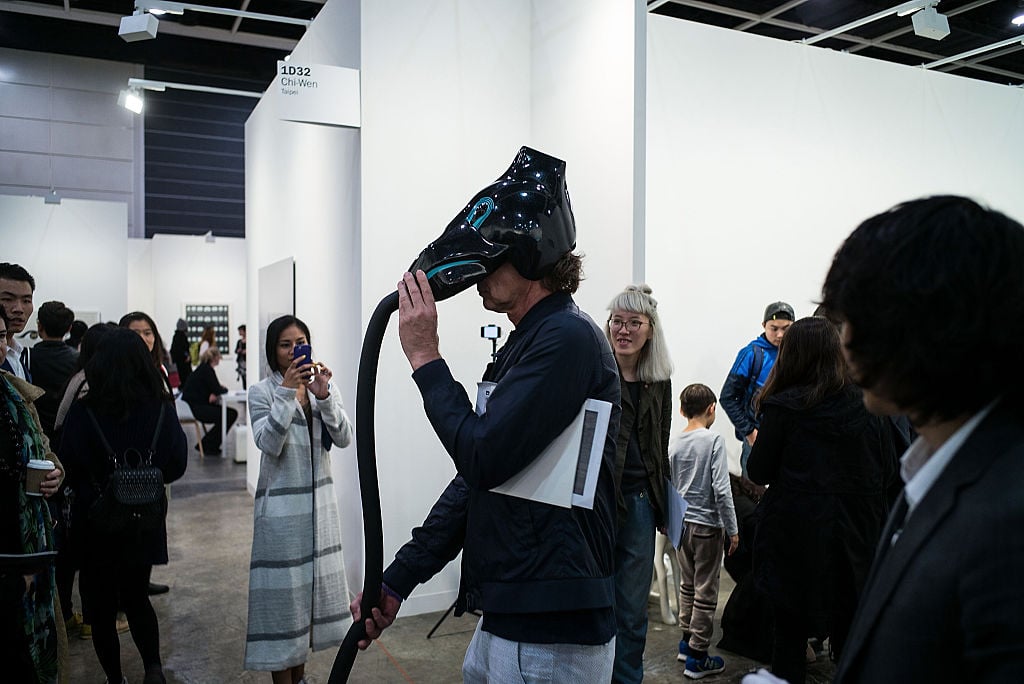
HONG KONG – MARCH 24: People visit Art Basel on March 24, 2016. The annual Art Basel in Hong Kong opened the city on March 22.
Photo by Lam Yik Fei/Getty Images.
I accidentally landed in K11 mall instead of pop-up show Adrian Cheng’s New World Development Company sponsored whose motto is “In Art We Live” or was it “We Live in Art?” Said to be a future model for seamlessly incorporating art into mainstream branded commercial experience, I found a bunch of shitty stores with a half dozen similarly lousy art pieces. The only standout was the relief to be in the only shopping center in Hong Kong with lowbrow goods and no Rolex or Prada outlet, which are everywhere.
At which point, I popped into the Pedder Building to visit a few galleries. Dan Colen’s show, “When I’m Gone,” at Gagosian was like another bland brand. It was flower residue on canvas (mixed with his other favorite medium chewing gum?); if he keeps making such unstable, repetitive art he may be gone before he intended. The enterprise comes off as contrived juvenilia; presto-change-o, in five years there will be a trace of a memory—it’s happened to a friend’s work already.
Massimo de Carlo’s new space in the Peddler has been carved out of Ben Brown’s existing gallery, as propitious a time as any to shave a few dollars off rent. Yan Pei-Ming exhibited Picasso portraits at MDC and though it might appear a Chinese thing with artists like Zeng Fangzhi and many others depicting famous art historical figures for easy to feed collectors/speculators (if any left), Rudolf Stingel recently exhibited a full-length Picasso picture of his own with Gagosian at Maastricht (a soon to be Basel product?). Famous artist paintings make good fair fodder.
Sadly for De Carlo’s gallery sitter, the only person in the building not wearing a hygienic disposable face mask—I find those things rather creepy (what do they know?)—I walked to his desk and as he extended a press release I accidentally sneezed in his face. Whoops. Even scarier, Tracey Emin, who recently married a rock (yes, a rock), had two shows in town, at Lehmann Maupin and White Cube, and fared about the best of the lot with subdued, conservative paintings and drawings of her body like Cecily Brown drained of color, or a Dan Colen flower painting in a few years.
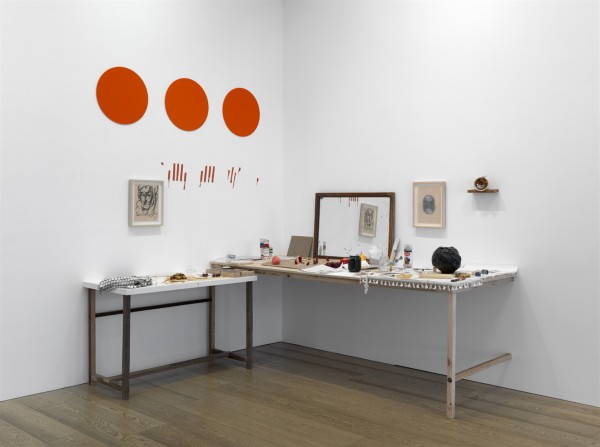
Uri Aran Untitled (2012), mixed media, small table.
Basel in Hong Kong
This is not a fair for dime-a-dozen Western advisors and sundry others falling over themselves for the same stuff as usual; rather, it’s the same stuff as usual for a wholly different audience. Since officially taken over, the Hong Kong fair is less sloppy, a more grownup global internationalism. Maybe there’s a vague regional flavor, really the content is fungible, but what’s clearly not the same is the distinctly Asian identity of the buyers. For such a populous city, with two slated VIP openings, the first bordered on a ghost town inhabited by a small group of big clients—why there’s more than one opening is beyond me. Tumbleweeds may have been rolling down the aisles but though there weren’t many, the folks that pulled the trigger were not gun shy and constitute quite a market. Listen loud and clear everyone: the art market is in rude health.
Here are the stats: walking the fair it’s fun to play price is right, guessing the Judd ($800,000, I had no idea) at Kukje Gallery from Seoul, vs. the Sigmar Polke at Zwirner which was $2.8 million (I was close with a guess of $3 million), both unsold at the time of this writing. But what did sell was bountiful from my estimation including a Marlene Dumas for $3.5 million also from Zwirner, a Yayoi Kusama work to a regional museum from Victoria Miro, with an asking price of $500,000. I know a dealer that formulated an average Kusama price pegged to the size of the canvas to effectuate sales with hedge funders. It’s also a sport to clock how long gallery principals stay in town, if at all—Zwirner all the way, Larry G., Marc Glimcher, and Per Skarstedt, no shows.
And, despite a monied display of Louise Bourgeois spiders on top of spiders for multiple millions, I didn’t seem to see Ivan Wirth either.
Venerated London gallery Sadie Coles sold a smallish $2.5 million Stingel canvas of a stag early on the first day but also introduced a mixed media tabletop installation for $45,000 by artist Uri Aran, who had a “collaborative performance” involving bagels in 2015 at Gavin Brown’s Lower East Side space, that hadn’t moved and probably wouldn’t. She described the piece as being about circles and for the rest of trip all I saw was balls.
Simon Lee from London and Hong Kong sold Sherrie Levine’s cast bronze Tree Bark Mask (2010)—from an edition of 12 with three artist’s proofs—for $150,000, and was paid the very next day by another local client definitely not cognizant of ins and outs of art world, i.e., endless payment terms. Imagine walking into a supermarket, negotiating the price of a quart of milk, not paying for six months then returning it because its rancid, that’s the art trade. He asked me not to mention this but I’m a fucking journo, if you don’t want me to write don’t tell. By the way, he also said not to tell that he sold two blurry Jeff Elrod paintings (its not my photography) for $150,000 each (neither of which has been paid to date).
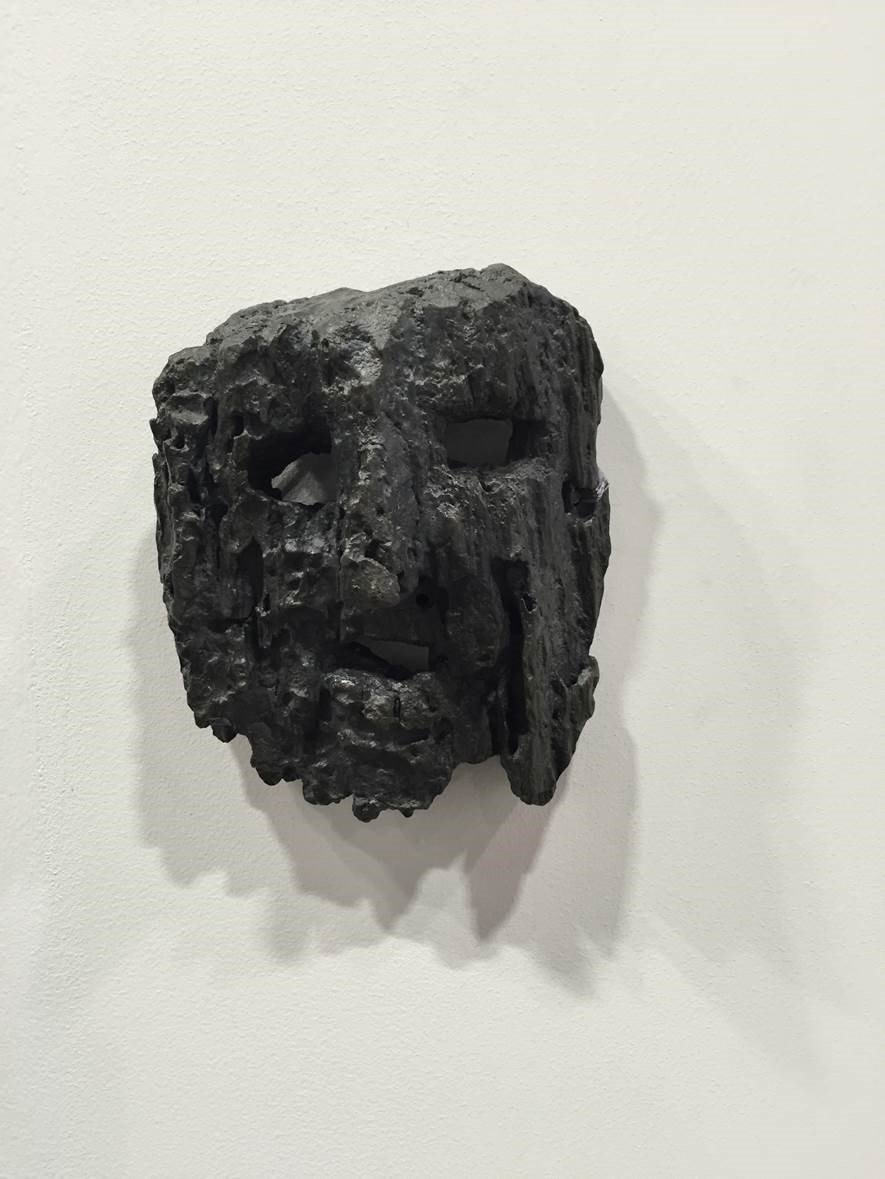
Sherrie Levine’s cast bronze Tree Bark Mask (2010).
Photo: Courtesy of Kenny Schachter.
Vanessa Carlos of Carlos/Ishikawa in London had a two-person display of Oscar Murillo and Korakrit Arunanondchai, the former an ad hoc mess of an installation and the latter, more sellable light boxes; all seven of the latter sold for $35,000 each to yet more locals. Vanessa confessed to me that she doesn’t really believe art has sold out to the market, which was the position she was persuaded to maintain against me in the debate. David Kordansky from Los Angeles shouted across his booth that I instill hope in the art world, admittedly a refrain I’m not entirely accustomed to hearing. He sold a great mini Jonas Woods pencil drawing for $20,000 that I coincidentally own the equally little painting of.
I loaned a two-sided painting to a gallery in the fair that had been previously hung in a major museum show with a particular orientation. Consigning pieces to fairs is like entering the convention center in a Trojan horse without the cost, headache, or politics. Sidling up to the booth my head turned sideways like a dog and I couldn’t quite size up why. Without asking, he figured out the work was framed within another frame and rehung it backwards, without so much as a peep. A bit taken aback, I had to admit it looked better—the cost of letting go. It went on hold to an incredible private European institution (in reverse).
Here’s some news for you, not that the latest Anish dish that went for $2 million shortly after the first of the openings but the identity of the seller. None other than Larry G—a sign artist and dealer are engaged in more than a smooch. That Kapoor and Gagosian have something in the works was confirmed by a little birdie within, which can’t be Happy Valley for Lisson.
Lest I forget to mention, no art fair would be complete without the requisite appearance by Adrien Brody and Leonardo DiCaprio. At another Simon de Pury–hosted amFAR benefit auction, a Brody dragon fetched $100,000; granted it’s charity, but it just doesn’t smell right—couldn’t you have just cut a check? We mustn’t encourage him. Leo and Co. (he rarely moves sans entourage, including New York’s Helly Nahmad), dropped by Cardi gallery and attempted to bargain down a little 1964-65 $2 million Lucio Fontana two-slasher stating he could get two individual slash paintings for the same price, but was reassured by Nahmad that was the going rate per slash (RPS price indicator) for a red one. They also had a Cy Twombly 1960s scribble painting on paper in two sheets for $10 million, both unsold as of now.
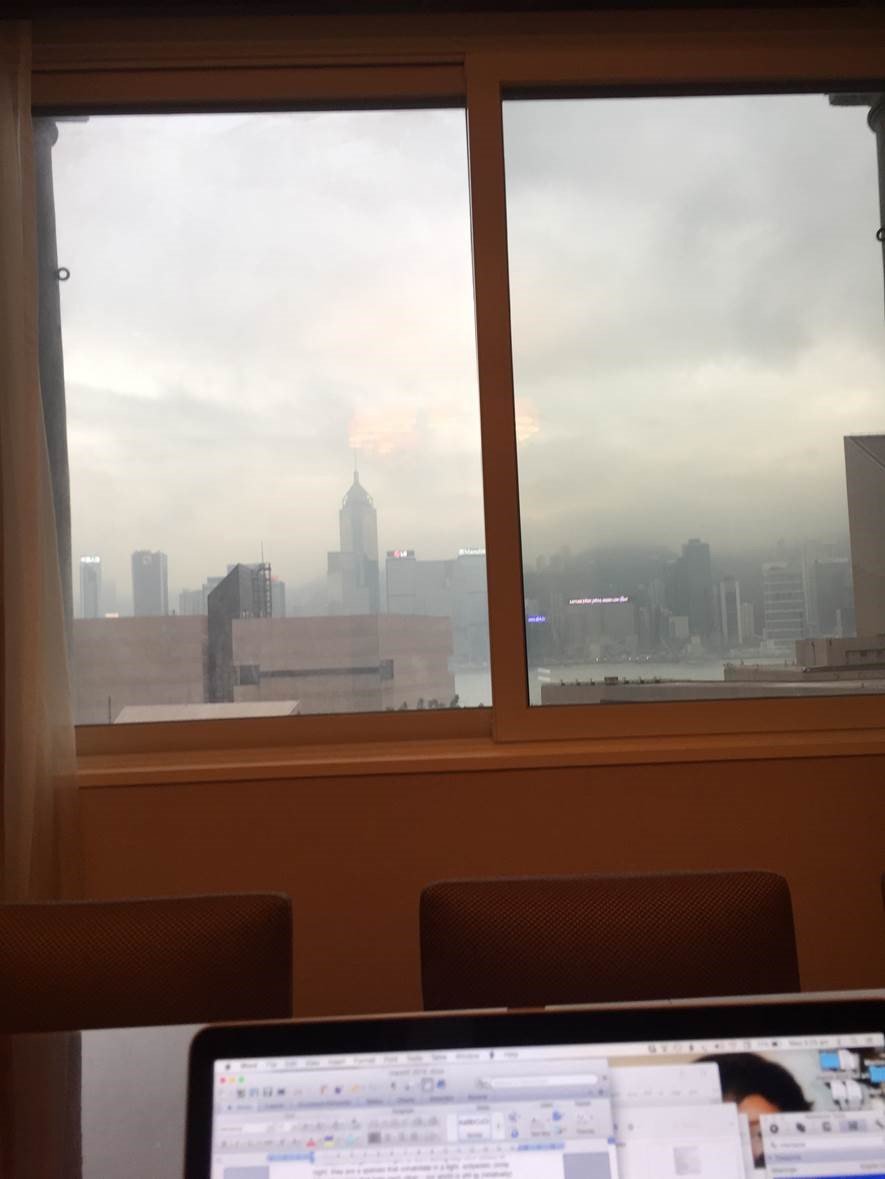
Photo: Courtesy of Kenny Schachter.
Dealer Life
Fraternizing, fighting, drinking, gossiping, we dealers stick together like pack rats. A group of us had Chinese food including fish stew that was so MSG infused it was like eating exploding-in-your-mouth Pop Rock candies; I thought I was having a stroke. I hope the markets aren’t as wobbly as the gelatin dessert cube that was not spam but sure looked like a translucent version of it.
At drinks in the lobby of the Mandarin Oriental hotel lobby bar after, Sam Orlofsky of Gagosian bum-rushed me spitting a Mike Kelley offer at my face but refusing to take my email or send me anything on it, demanding I seek out a previous exhibition catalogue. The New York Gogo squad is tight with the Barbara Gladstone-rs. Team Sadie—they should have jumpsuits or uniforms (oh right, we do Prada), were hanging in unison.
One dealer had the misfortune of sending a jokey email that he’d pee in the bed of his friend to warm it up before he arrived in town but sent it to a young Asian collector as she sat down to a meal with her family, which he was about to meet. Luckily (for him) she was amused. I may have done the same thing to Marc Spiegler, head of the fair, involving tuna cheeks but I’ll leave that for another time.
The gallerists intermingle over work during the day and (plenty of) booze at night, they are a close knit species that cohabitate in solipsistic circles of worker bees. Even the one’s that hate each other—our world is still too (relatively) small to be too picky. The next morning after the dumpling fest I was surprised to find my shirt clear of the greasy orange residue that saturated every course of the meal.
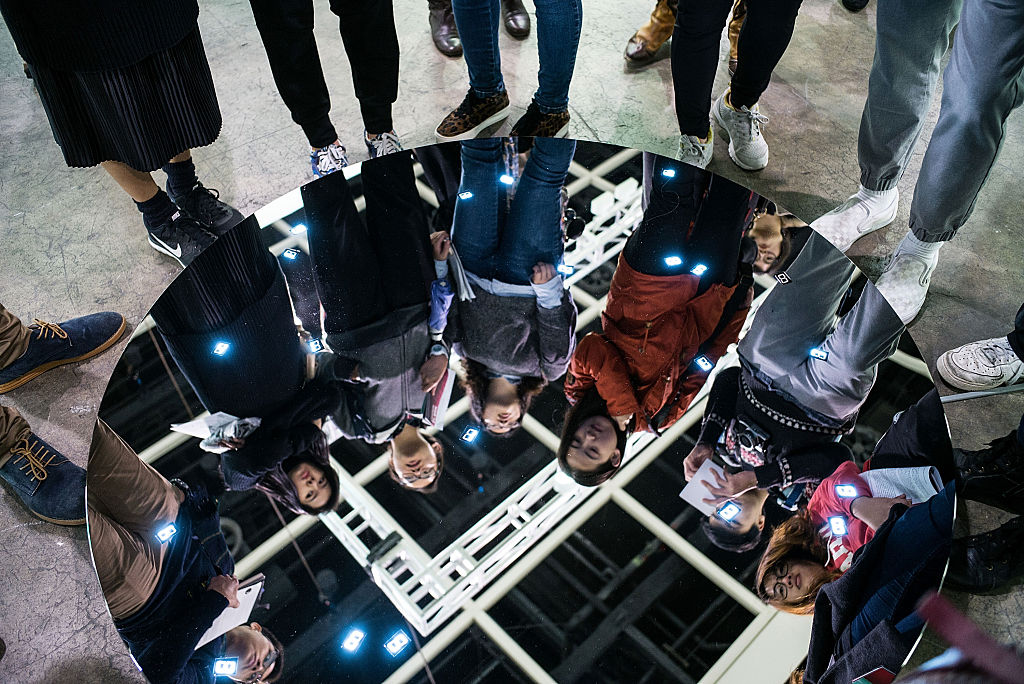
HONG KONG – MARCH 24: People look at an art work at Art Basel in Hong Kong, Hong Kong. The annual fair opened the city on March 22.
Photo by Lam Yik Fei/Getty Images.
Hong Kong Central
Hong Kong Central is the Chinese version of Scope. I was surprised not to recognize a soul in the double tent, which was a refreshing palette cleanser. Some dealers attempted to physically usher me into their booths all but against my will, endlessly trying to engage; from then on it was eye contact avoidance.
Does Marc Quinn have an art gallery you may want to know? Yep, he does, and it’s called Marc Quinn Shop and/or Human Reproduction. A good argument itself art’s sold out. Bless him, he’s gone direct to market—well, more so than opening his studio to all-comers, and he was exhibiting Daniel Ashcan or was it Arsham, himself and the Chapman Brothers. The naughty brothers presented a group of cutesy, wrought iron dinosaurs for £200,000 a pop in an edition of many shapes and sizes that would make Ai Weiwei proud. Quinn, who’s name was on every business card, is a new kind of culture-teer, an art-trepreneur, and a more interesting model than his recent art.
There were more Kusama pumpkins than you can shake a stick at, as well as a Nara for $3 million for an oversized work on paper at Whitestone Gallery in Tokyo and Hong Kong, which specializes in Japanese art—a nice random name conjured by CEO Koei Shiraishi. Though I was expecting loads of smiley Yue Minjun’s and the bloodline paintings of Zhang Xiaogang, alas there were none. But there was a “BMW NO” painting by Wang Guangyi who made endless “NO” paintings applied to anything remotely fun. Saatchi bulked up on all of them, then dumped just as quickly. An artist I thought would live to see another fair was Zhou Tiehai, aka Joe Camel. He’s now directing his own fair, the West Bund Art & Design Fair.
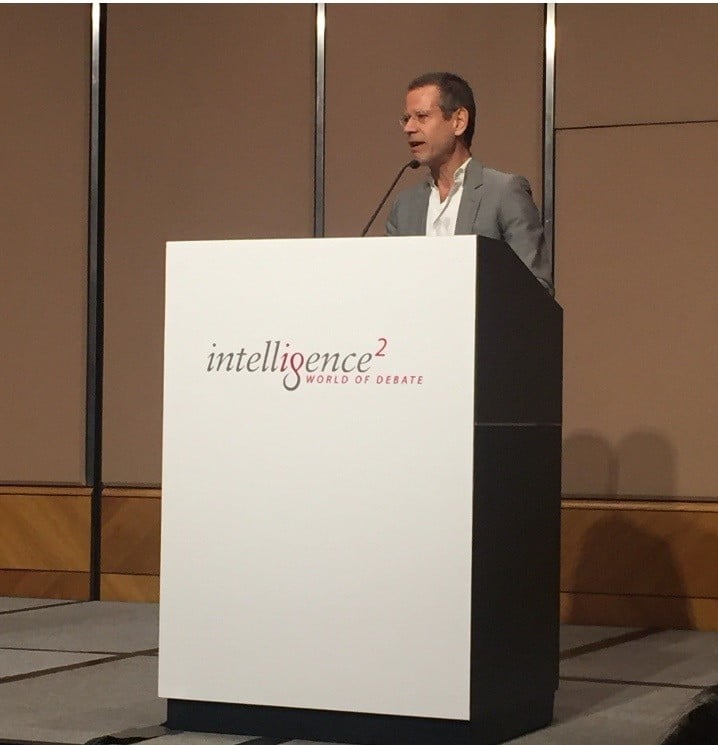
The author speaks.
Photo: Courtesy of Maria Baibakova.
The Debate
I think it’s reasonably safe to say cave drawings were not conceived with a quick flip in mind, since art has been created it’s been coveted and revered which will continue with unprecedented ferocity (in my opinion). It’s past financial asset; besides, you’d need to be more a wizard than Harry Potter to figure that angle out today. Art is not money, far from it, it’s passion, expression, communication, and as innate as going to the bathroom. Some would say much new art resembles a trip to the toilet.
Nowadays, who’s smart enough—dealer, artist, or collector—to construct or manipulate a career in a volatile, choppy market heading down in more cases than up? Gone are the days when cabals could condition hot artists in the same way you can’t manufacture a hit song, novel, film or play. We are in the most unstable economic art environment I can remember and finally connoisseurship is more vital than in years, yippee. Have you ever sold a piece of art? In the best of times it ain’t easy, trust me, I’ve been doing it in fits and starts for over two decades.
Even large inventory owning families we all know can’t ultimately control what has become a diffuse global market without real, non-manipulated demand coupled with underlying quality of the art. Sooner or later crap floats to the surface, and you can’t prop up poop (indefinitely). There is an inherent value of art and history is the greatest determinant of it: namely, time will tell (often, but not always, reflecting market sentiment). Revisions up and down will be made, but rarely are there big surprises.
Thanks to artnet’s Price Database, I found out there are well under 500 living artists who have sold for $1 million or more. I also uncovered everything you’ve ever searched for. Just kidding. Of those that could, only a miniscule amount of artists could be considered sell-outs. I can only think of a handful: Jeff Koons, I must say I’m no fan of his blue balls at $2.5 million at Gagosian; Damian Hirst, but as much merch as he churns, he’s concurrently made a nearly 10-year commitment to his next body of work; Takashi Murakami, who continues to support young artists from the proceeds of his multi-varied practice and Yayoi Kusama—who at 87 years of age has earned the right to sell out for as much as she can. But you don’t get to sell out till you’ve done something extraordinary, as all the artists above have, even Marc Quinn.
Art and money are old pals; Rembrandt was obsessed, a fervent collector of his peers and at one stage owned the biggest house in Amsterdam before he went bankrupt from living large. Warhol wished he could have cashed in but it wasn’t for lack of trying. He opened the gates for those who followed. If you ask any of the above under oath if they were insincere, they would put their hands on their arty hearts and swear they were pursing art before financial gain. Sure, some artists have been more financially minded than before, the loosely branded Zombie Formalists that made art in big series with easy-to-swallow content. But that was small beans and short lived.
Most in my profession would do what we do for free, like the debate, though an honorarium or cheapo flight with pay-for-use bathrooms would have been a welcome gesture. In the business model of small and mid-level galleries by default they are working at or near nothing.
The debate was about more than money-art, it’s integrity and the pursuit of the meaningful and sublime; to live among art is a gift and will always surpass the concept of another financial chip. Even a stillborn market wouldn’t stop the flow and fanatics who form the social (and economic) fabric that enfolds it. Art is a lifestyle, albeit a luxury. Look how many people flew inhumanly long flights to be sitting in an Oxford rules-debate, of all places. Art chooses you rather than the other way around, and there are no shortcuts or cutting corners. It’s no easy feat.
When I publicly speak I switch on, trumping The Donald in my bombastic gregariousness. This makes up for the lack of a viable position or the capacity to remember what I was going to say. Maybe that was the glass of wine before. Though I lost the debate, the majority was in favor of the proposal that money rules art, I still managed to turn fully 14 percent of the crowd with my earnestness in the belief of all things art (they vote before, and after). So I guess the consensus was that we live in a Marc Quinn universe. Afterwards, a woman asked me to see the private collection she curated among the first private museums in China, then asked me to curate a show there followed by an appeal to move to China. I mustn’t have been as bad as I thought.
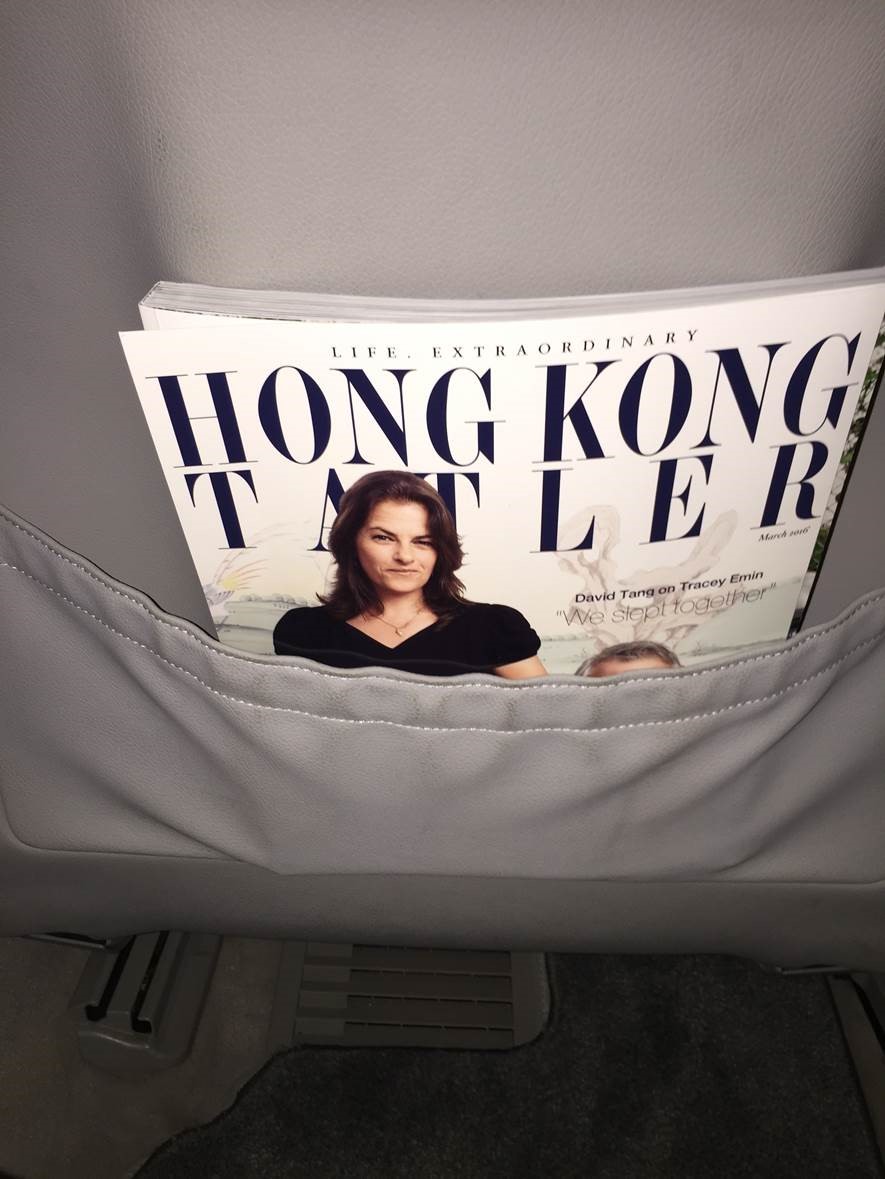
Photo: Courtesy of Kenny Schachter.
History has a, well, history of wrongheaded ideas people once resolutely believed in. I wonder if Tracey Emin’s mug, emblazoned on the cover of Tatler Hong Kong magazine staring me in the face from the seat pocket on my way to the airport (you can run but not hide, it’s a Starbucks brand) is such an instance. But what the hay, good luck to her (and even more so, the stone husband).
Here is a prognostication: May auctions in New York at Christie’s and Sotheby’s (assuredly not Phillips, sorry) will define the year’s performance, and I have little to fear. Rocky recessionary roads, which some would say we are on, or about to be again, won’t stop the locomotive that is art and the market. And they are not mutually exclusive, by the way.
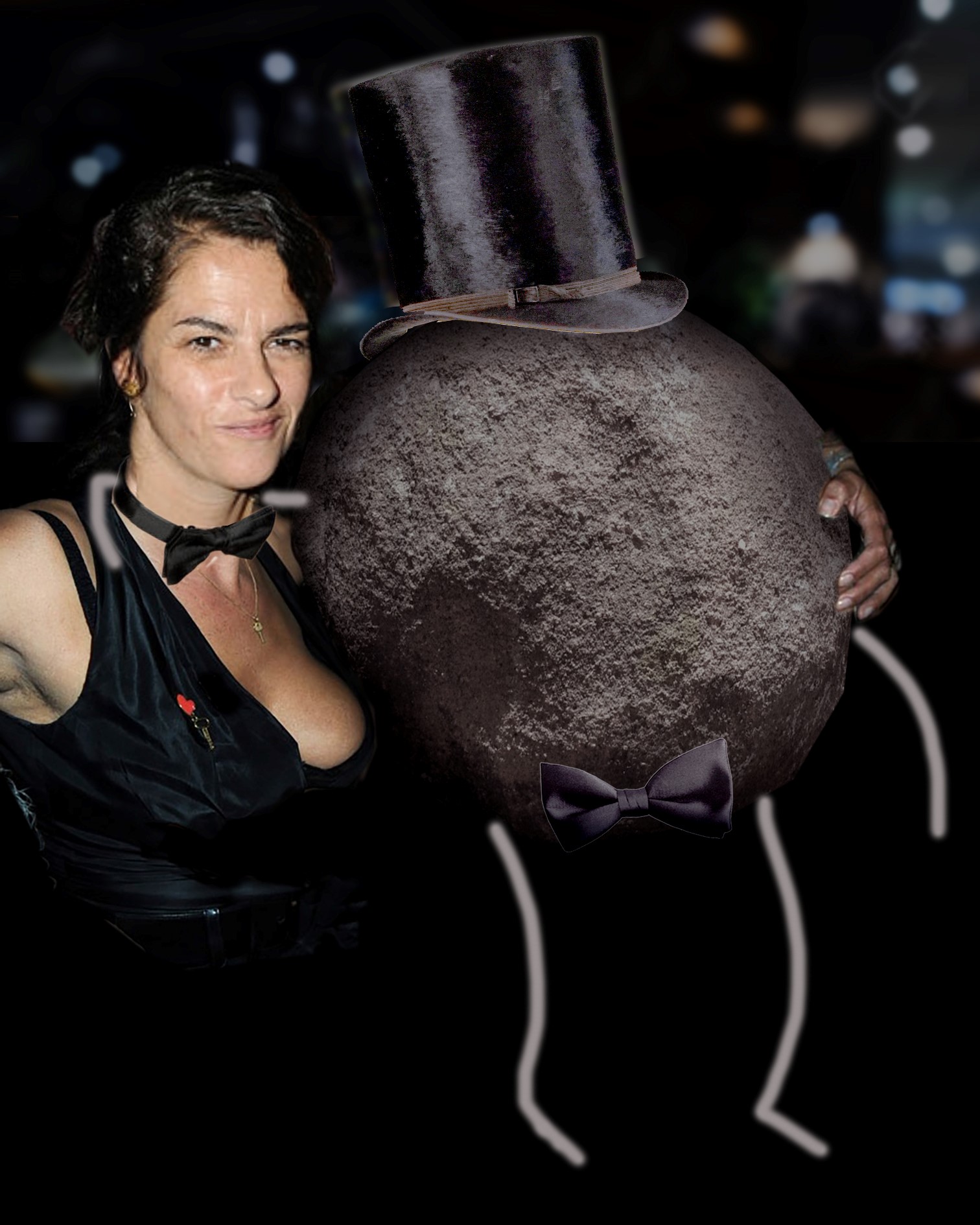
Image: Courtesy of Kenny Schachter.